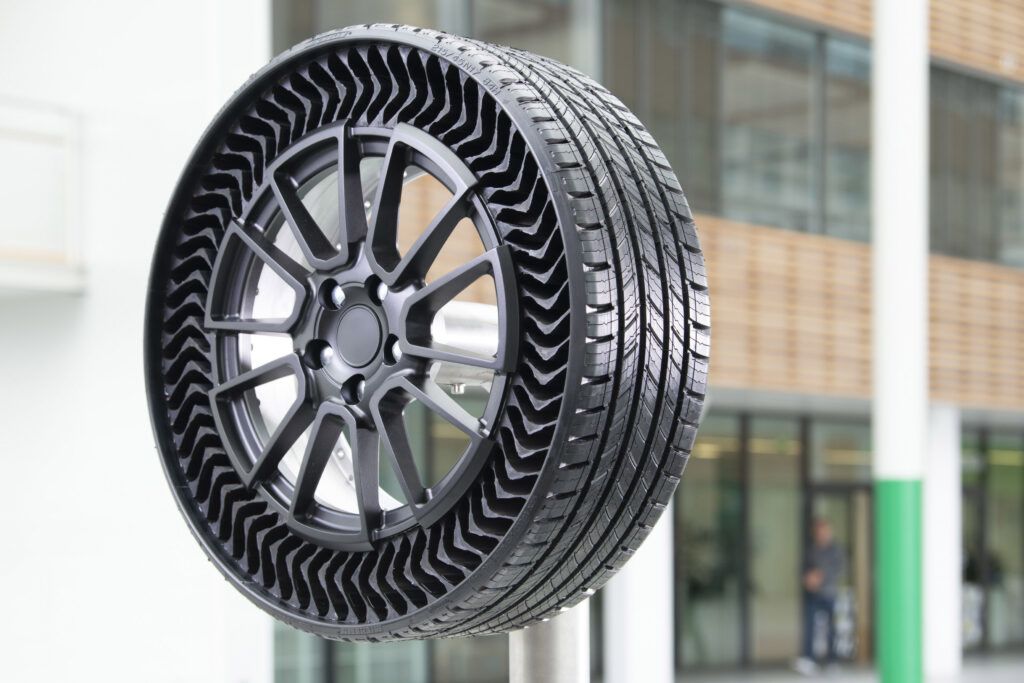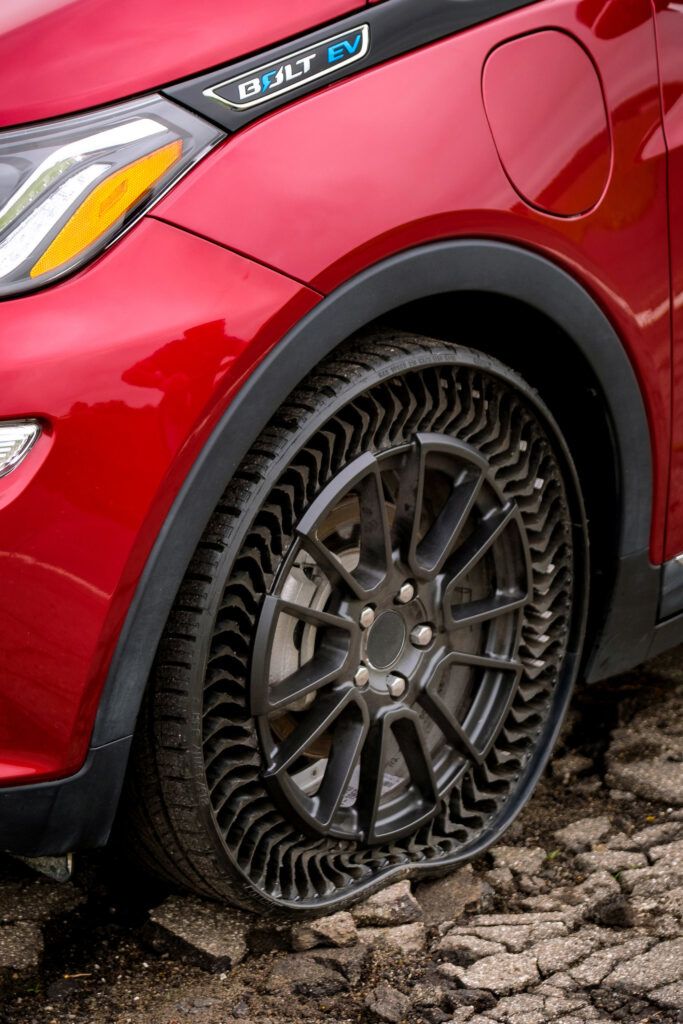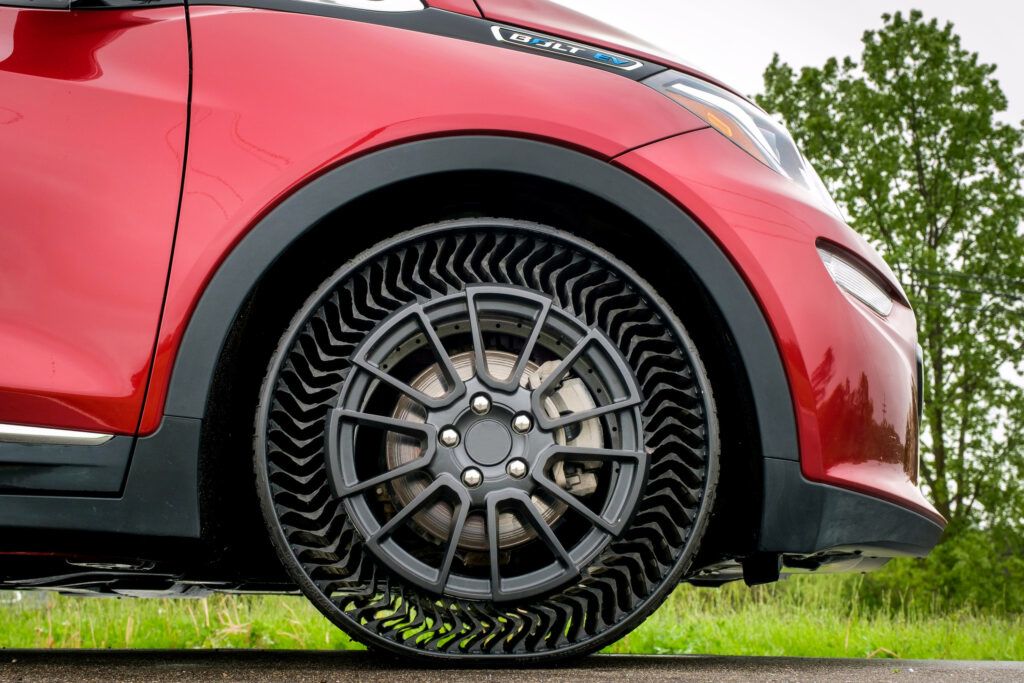Michelin’s New Airless Tire Design Will Never Go Flat
Forget fixing flats, monitoring air pressure, and replacing punctured tires long before they’re worn out. Michelin aims to take air out of the equation altogether with its new Uptis design (or “Unique Puncture-proof Tire System”). Presented at the Movin’On Summit on Sustainable Mobility, the Uptis Prototype does away with traditional sidewalls, instead relying on a new resin-embedded fiberglass material that’s strong enough to carry the weight of the load of a vehicle but still light enough to replace the air used in conventional tires.

Carrying the load at the top of the tire rather than the bottom is a key part of developing an airless tire that actually works in the real world, as it allows it to maintain a smooth ride and prevent issues caused by compression. Removing the sidewalls also gives the tires a unique look, and you can see just how well the tire reacts to obstacles in the road as a result of it, flexing slightly to protect the wheel. Michelin says the Uptis tires will just last as long as regular tires, too, because they eliminate the kind of irregular wear and tear caused by under and over-inflation.
Michelin is co-developing the tire along with Detroit-based auto manufacturer GM, which expects to start testing the prototype tires in Michigan later this year — fittingly enough, on a fleet of its Chevrolet Bolt electric hatchbacks. If all goes well, they’re hoping to have Uptis-style tires on passenger vehicles as soon as 2024.

Once it makes its debut on the consumer market, different versions of the tire will likely be available for different vehicles and driving characteristics, according to Cyrille Roget, Technical and Scientific Communication Director for the Michelin Group. GM’s testing will simply help the Uptis developers finalize details like the right number of spokes and type of rubber for the outside of the tire.
The Uptis is the latest evolution of Michelin’s VISION concept, which was first presented at the Movin’ On Summit in 2017 as an illustration of the company’s strategy for research and development in sustainable mobility. The concept introduced four main pillars of innovation: airless, connected, 3D-printed, and 100-percent sustainable (meaning it’s made from entirely renewable or bio-sourced materials). The Uptis will specifically reflect achievement of the first pillar, and Michelin hopes to keep refining the design over the next few years.

In addition to keeping passenger vehicles safer on the road through a reduction of blowouts, Michelin says the Uptis could help operators of passenger vehicle fleets “minimize downtime and improve efficiency resulting from flat tires and near-zero levels of maintenance” while also introducing environmental savings “through reduced use of raw materials for replacement tire or spare tire production.”
“The Uptis Prototype demonstrates Michelin’s capacity for innovation — in both the mastery of these high-tech materials, and also the development approach in close collaboration with GM, which validates our VISION concept as a roadmap for innovation,” says Eric Vinesse, the company’s Executive Vice President of Research and Development who also unveiled Uptis at the Movin’On Summit. He adds: “Uptis represents progress toward Michelin’s vision for tomorrow’s mobility, and also embodies our commitment to better sustainable mobility for all.”




